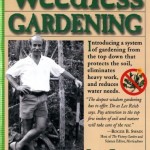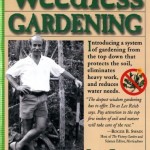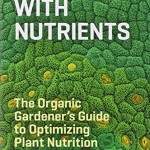
The Weedless Garden is good for plants and it’s good for people. It protects the soil, contributes to plant health, reduces water needs, cuts down on a gardener’s labor, encourages earthworms and, of course, mitigates weed problems by keeping the seeds dormant. Four basic tenets form the system’s backbone-minimize soil disruption; protect soil surface; avoid soil compaction; use drip irrigation-and the way to get there is simple. For a new bed or established garden, layering is key, and the perfect material to use is also among the most common-newspaper. Add organic mulch and compost on top, and plants are growing in rich, self-generating humus. From vegetable gardening to flower gardens to planting trees, shrubs, and vines, The Weedless Garden works everywhere-allowing the gardener to work quite a bit less.

